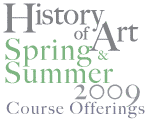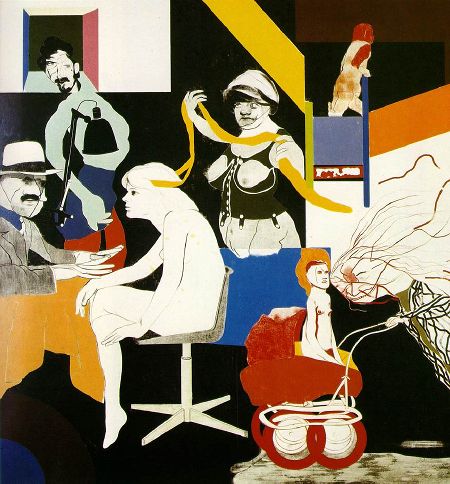
|
||||
| 100 level | ||||
|
||||
| 200 level | ||||
|
||||
| 300 level | ||||
|
||||
|
|
||||
| History of Art | ||||
| LS&A | ||||
| University of Michigan |

The nineteenth century dialogue between photography and painting is well known. Impressionists assimilate portrait photography, photographers the fluency of landscape painting. Photography challenges the throne of painting but also exists in anxious relationship to painting's status as an art of the hand. These lively, if uneasy relations prepare the way for another dialogue, another argument which subsumes the next, twentieth century: between film and painting. From the moment of film's invention by Thomas Edison in the 1890s film draws on the dynamic energies of Degas in inventing its own forms of editing and motion, on the stillness and transparency of Vermeer in inventing its framing. Painting reels before the moving picture, but also immediately learns from it. Painters become filmmakers (Andy Warhol), filmmakers paint on the surface of their works (Brackhage). Portrait painting is dynamized by cinema (Kitaj), cinema turned painterly by the hand of the impressionist. And so Pierre-Auguste Renoir gives birth to Jean Renoir.
This lively history of appropriation and argument will be the substance of our spring class, but also an exploration of just how different the two media are, film and painting, making their cross-pollination all the more interesting for dynamic, modernist times. Indeed central to modernism has been an experiment that merges media from multiplicity into originality, and this forging of paint or drawing or etching with camera, editing and sound is among the most astonishing experiments of avant-garde and contemporary art.
Readings will include art theoretical and philosophical studies of the media of painting and film, historical work on their interactions, criticism, art-writing and also single author studies. The course assignments will consist in a three page paper and a final research essay. Estimated cost of materials: $100 or more, but less than $150.
D. 3, 4